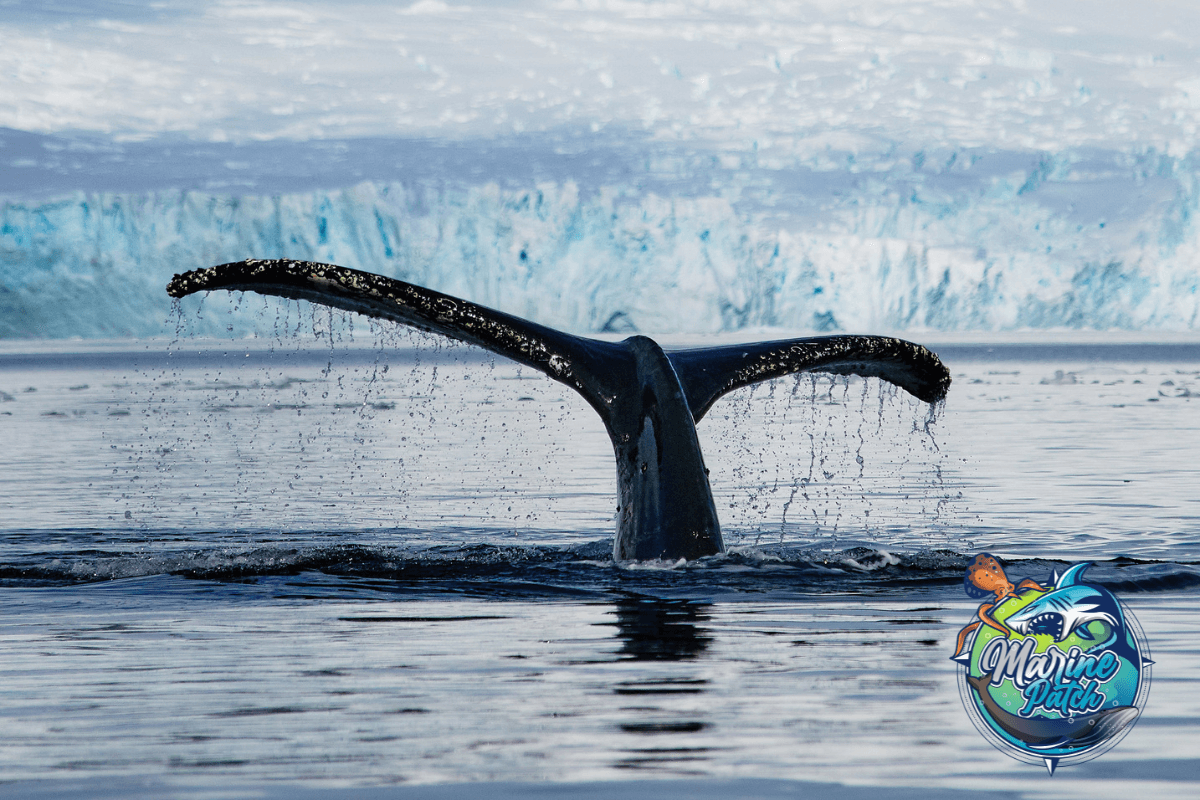I recently had the opportunity to witness something truly spectacular on a trip to Alaska.
While on a whale-watching excursion, our boat came across a pod of humpback whales swimming and breaching in the waters off the coast.
It was an unforgettable experience and one that will remain with me for the rest of my life. But it got me thinking about the other types of whales in Alaska.
Alaska is home to a diverse range of marine life, including several species of whales.
Humpback whales are among the most commonly spotted in the area, but there are also gray whales, orcas, and belugas that can be found in Alaskan waters.
These creatures play a vital role in the ecosystem, and it’s essential that we take steps to ensure their survival.
So, let’s take a look at 9 types of whales that can be found in Alaska.
1. Humpback Whale
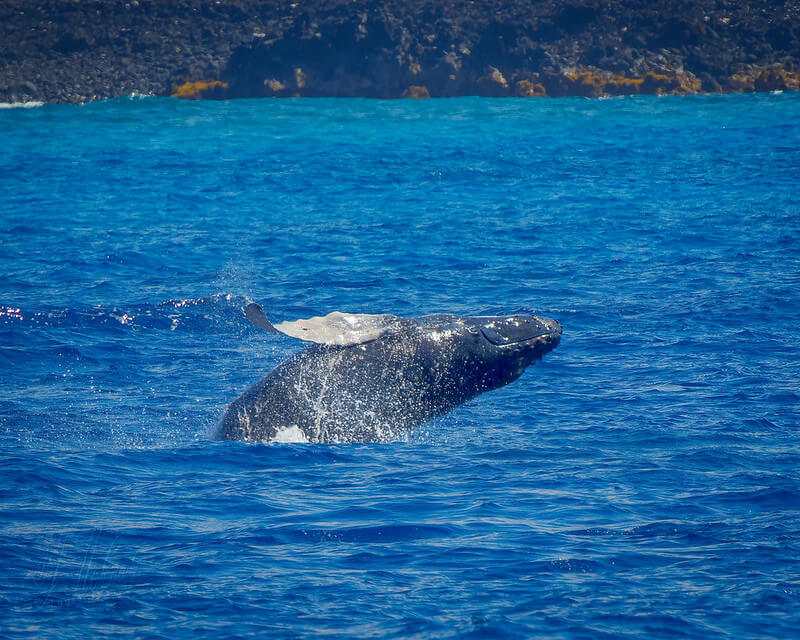
These magnificent creatures are known for their long migrations and impressive acrobatic displays.
Humpback whales can grow up to 50 feet long and weigh up to 40 tons, making them one of the largest animals on the planet.
One of the most distinctive features of humpback whales is their long, slender flippers, which can be up to one-third of their body length.
These flippers are covered in bumps called tubercles, which help to reduce drag and increase maneuverability in the water.
Humpback whales are also known for their complex songs, which can last up to 20 minutes and can be heard for miles underwater.
These songs are thought to be used for communication during mating season.
If you’re heading out to Alaska anytime soon, there’s a strong chance you’ll come across humpbacks.
2. Gray whale
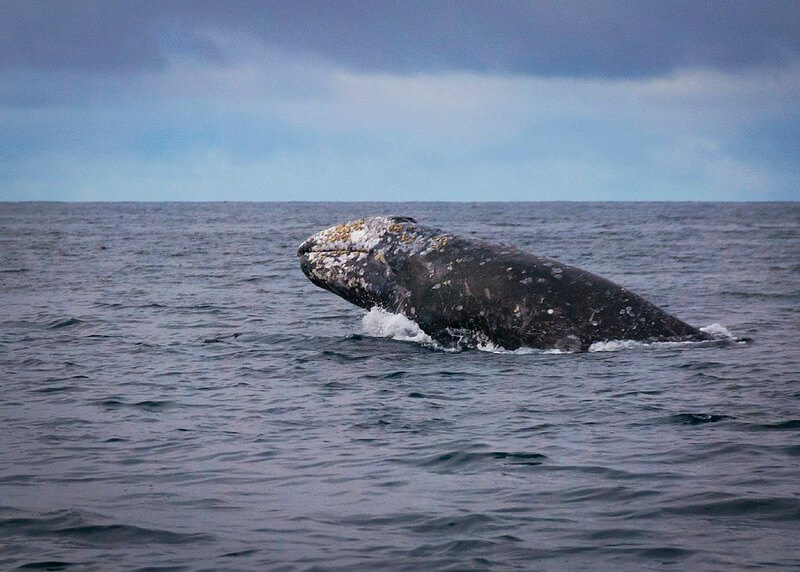
Gray whales are a common sight in Alaska’s waters. These whales are known for their distinctive mottled gray skin, with white patches on their flippers and back.
They can grow up to 50 feet long and weigh up to 40 tons.
Gray whales are baleen whales, which means they have a comb-like structure in their mouths that they use to filter small organisms, such as krill and plankton, from the water.
They are also bottom feeders, using their snouts to stir up sediment on the ocean floor and then sucking in the water and food.
Gray whales are known for their long migrations, which can cover up to 12,000 miles round trip.
They spend their summers in the Bering and Chukchi Seas, where they feed and mate, before migrating south to their breeding grounds off the coast of Mexico.
In recent years, gray whales have faced a number of threats, including entanglement in fishing gear, collisions with ships, and changes in their food supply due to climate change.
However, efforts are being made to protect these magnificent creatures and ensure their survival for generations to come.
3. Beluga Whale
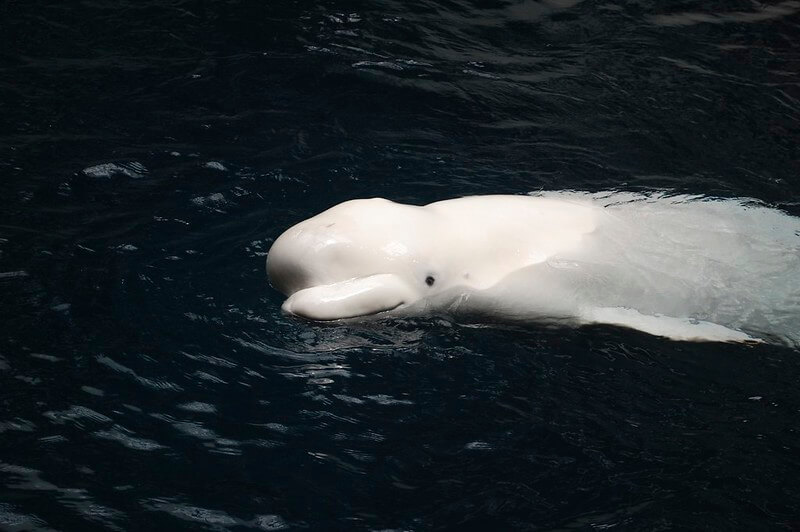
Beluga whales are one of the most unique and fascinating species of whales found in Alaska.
These whales are known for their striking white color and their distinctive melon-shaped head.
As a whale-watching enthusiast, I’ve had the pleasure of observing these magnificent creatures in their natural habitat a few times.
Beluga whales are found in the Arctic and sub-Arctic regions of Alaska. They are highly social and are known to travel in groups, or pods, of up to 10 individuals.
These pods are often led by a dominant female, who is responsible for the safety and well-being of the group.
One interesting fact about beluga whales is that they are capable of echolocation.
This means that they use sound waves to locate objects in their environment, much like bats do.
This ability is particularly useful for beluga whales, as they often swim in murky waters where visibility is limited.
Beluga whales are also known for their diet, which consists primarily of fish and squid. They are opportunistic feeders and will consume whatever prey is available to them.
Also, beluga whales have a unique way of hunting, which involves using their teeth to stun their prey before swallowing it whole.
4. Fin Whale
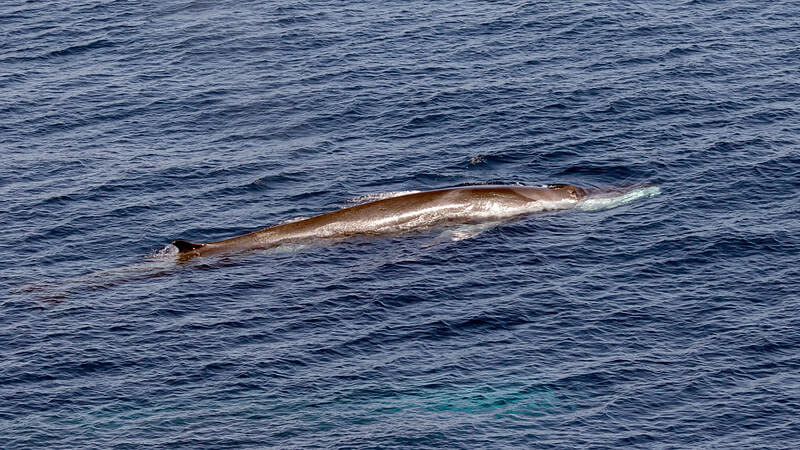
These whales are the second-largest species of whale on the planet, just behind the blue whale.
They can grow up to 85 feet long and weigh up to 74 tons. Fin whales are known for their long, streamlined bodies and V-shaped head.
One interesting fact about fin whales is that they have asymmetrical coloring on their lower jaw.
The right side of their jaw is white, while the left side is black. This is thought to help them when hunting for food, as it can make it harder for their prey to spot them.
Fin whales are known to feed on krill, small fish, and squid. They are also known for their unique feeding technique called “lunge feeding.”
This involves the whale accelerating towards a school of prey with its mouth open, engulfing a large amount of food in one go.
Unfortunately, fin whales have been hunted in the past for their meat and oil.
While commercial whaling of this species is now banned, they are still threatened by accidental entanglement in fishing gear, ship strikes, and pollution.
It is important that we continue to protect these magnificent creatures and their habitat.
5. Minke Whale
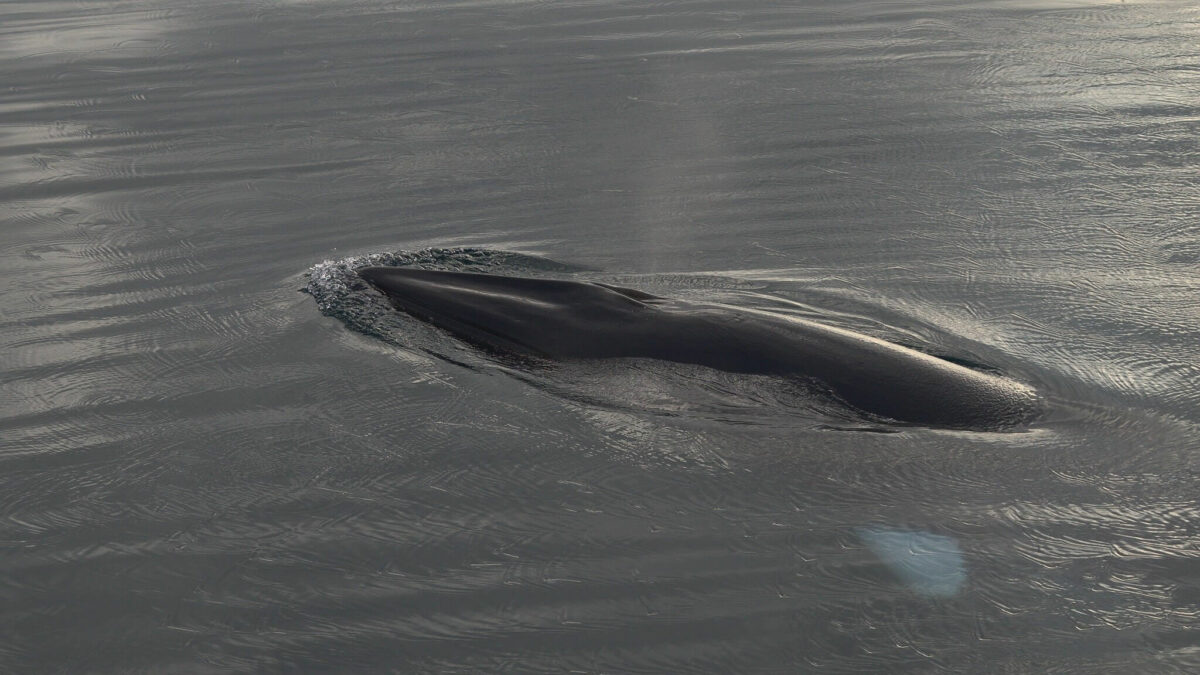
Minke whales are the smallest baleen whale species, measuring up to 10 meters in length and weighing up to 10 tons.
They are known for their sleek, dark bodies and white undersides. They have a pointed snout and a curved dorsal fin. Their diet consists of krill, small fish, and squid.
Minke whales are surprisingly fast swimmers, reaching speeds of up to 24 km/h and they are also known for their acrobatic abilities, often breaching and slapping their tails on the water’s surface.
While Minke whales are not currently endangered, they are still hunted for their meat and blubber in some parts of the world.
Fortunately, in Alaska, they are protected by law, allowing visitors like me to appreciate their beauty in the wild.
6. Blue Whale
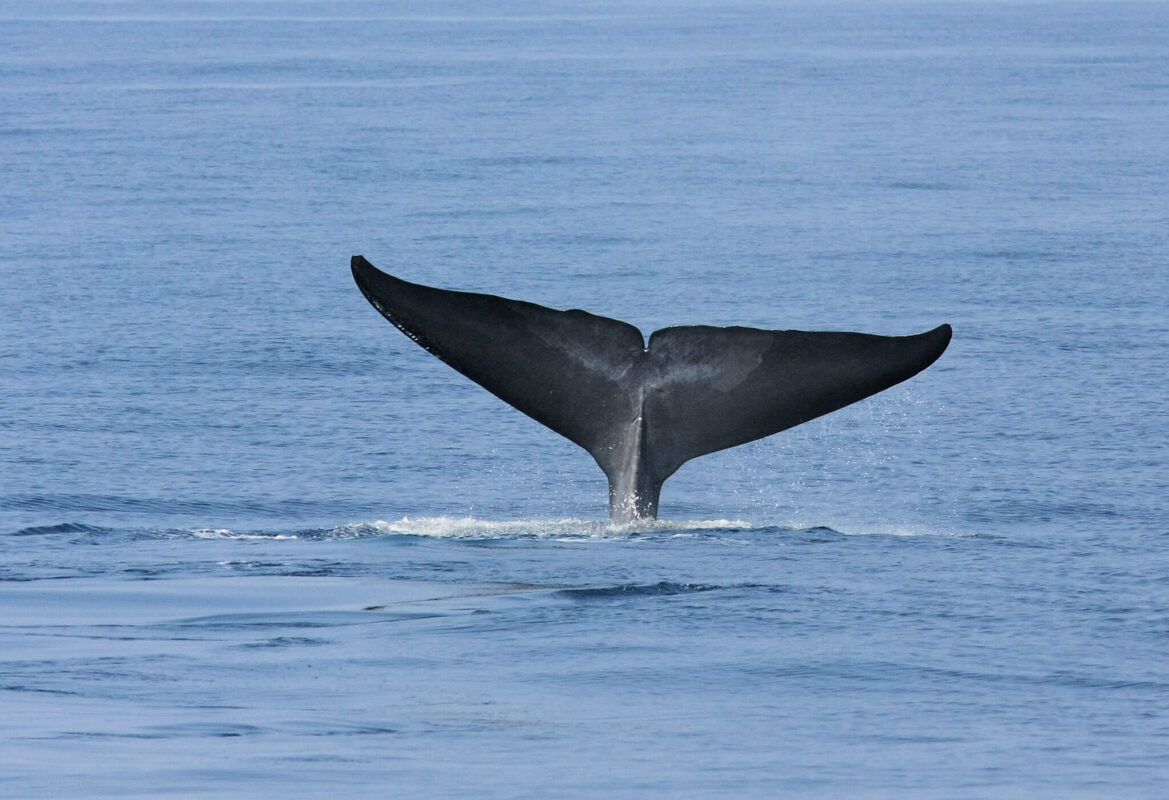
Blue whales are the largest animals on earth, and they are a rare sight in Alaska, so count yourself lucky if you spot one.
These gentle giants can grow up to 100 feet long and weigh as much as 200 tons.
They are filter feeders and mainly eat krill, a small shrimp-like creature. Blue whales can consume up to 4 tons of krill per day.
Blue whales are found in all of the world’s oceans, but their populations have been severely depleted due to commercial whaling.
Today, there are estimated to be around 10,000-25,000 blue whales in the world. I really hope you’re lucky enough to spot the world’s largest animal on your trip.
Fingers crossed!
7. Orcas
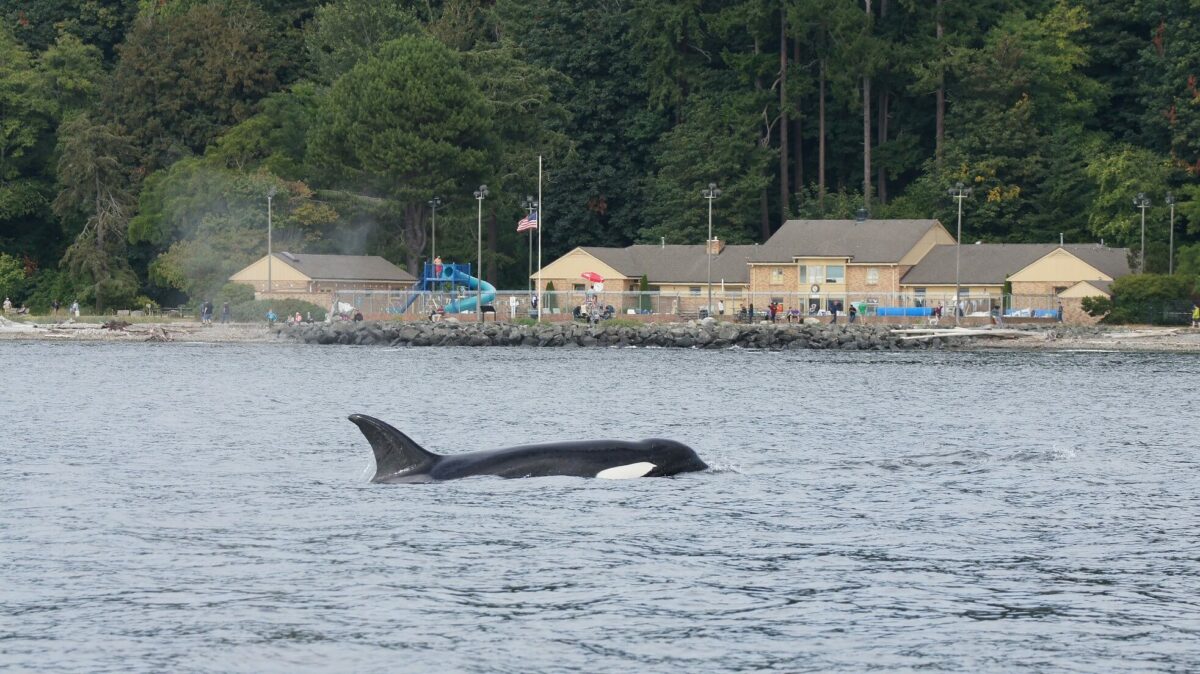
Orcas, also known as killer whales, are one of the most recognizable marine mammals in Alaska.
These apex predators are found in all the oceans of the world, but the waters around Alaska are home to a significant population of resident orcas.
Orcas are highly intelligent and social animals that live in pods. Each pod has its unique dialect, which is used for communication among its members.
They are known for their hunting prowess and are often seen preying on other marine mammals like seals, sea lions, and even other whales.
They use a variety of hunting techniques, including cooperative hunting, where they work together to catch their prey.
The orcas found in Alaska are divided into two distinct ecotypes: residents and transients.
Resident orcas feed mainly on fish, while transient orcas feed on marine mammals.
The two types of orcas have different physical characteristics and behaviors, making it easy to distinguish between them.
In addition to their hunting skills, orcas are also known for their acrobatic displays. They are often seen breaching, spy-hopping, and tail-slapping, among other behaviors.
These displays are not only entertaining to watch but also serve as a form of communication among pod members.
8. Sperm Whale
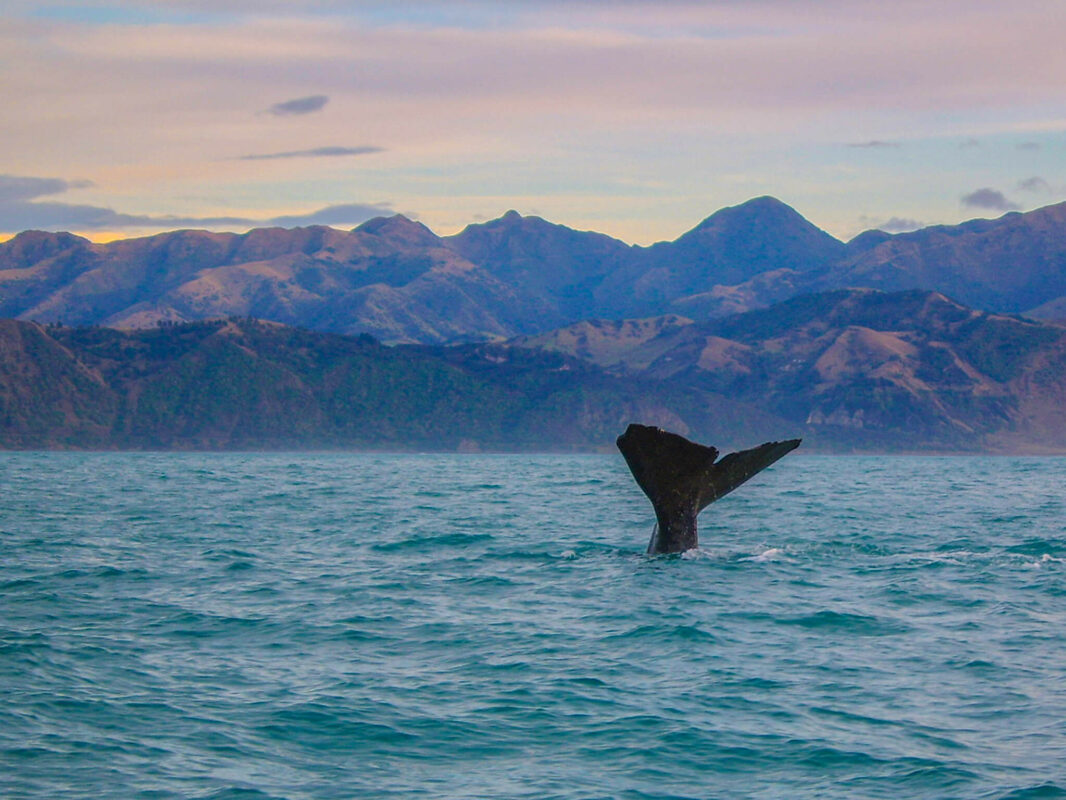
These whales are easily recognizable due to their large, square heads and the presence of a single blowhole on the left side of their head.
Sperm whales are the largest toothed whales in the world, with males reaching lengths of up to 67 feet and weighing up to 63 tons.
Females are slightly smaller, reaching lengths of up to 36 feet and weighing up to 15 tons.
These whales are known for their unique feeding habits, which involve diving to great depths in search of squid. They can hold their breath for up to 90 minutes and dive to depths of over 7,000 feet.
These stunning whales are highly social and often travel in groups called pods. The pods I saw consisted of several females and their offspring, with one or two males accompanying them.
It was truly a breathtaking experience to witness these magnificent creatures in the wild and I hope you can too. Sperm whales are truly one of the most fascinating species found in Alaska’s waters.
9. Bowhead Whale

Bowhead whales are one of the largest mammals in the world, reaching lengths of up to 60 feet and weighing up to 100 tons.
They are easily recognizable by their massive, curved, and bumpy heads, which make up about one-third of their total body length.
Bowhead whales are known for their long lifespan, with some individuals living over 200 years.
They are also known for their unique feeding habits. Bowheads have a flexible baleen plate that they use to filter out small organisms, such as plankton and krill, from the water.
They swim with their mouths open, using their baleen to trap food as they move through the water.
One of the most fascinating things about Bowhead whales is their migration patterns. They spend their summers in the Arctic, where they feed and mate.
As winter approaches, they migrate south to warmer waters, where they give birth to their calves. In the spring, they make the long journey back to the Arctic to start the cycle all over again.
Final Thoughts
Overall, Alaska is home to a diverse range of whale species, making it an important area for whale watching and conservation efforts.
During my research, I discovered that the most commonly spotted whales in Alaska are humpback whales, followed by orcas and gray whales.
It was interesting to learn that the humpback whales in Alaska are part of a larger population that migrates from Hawaii each year.
I also found that the conservation efforts in Alaska have been successful in protecting whale populations which is GREAT news.
The International Whaling Commission banned commercial whaling in 1986, and Alaska has strict regulations in place to protect whales from human interference.
It was encouraging to see the positive impact that these efforts have had on the whale populations in Alaska.
However, there are still threats to whale populations in Alaska, such as climate change and oil spills.
That’s why it’s important that we continue to monitor and protect these creatures to ensure their survival for future generations.
Anyway, I hope this post has been useful to you and you have an amazing trip to Alaska.

Hi, I’m George – the founder of MarinePatch. I created this blog as marine wildlife has been my passion for many years. I’ve spent over a decade in the marine wildlife industry and spent years out in the field conducting research. In today’s modern world, an online blog is the best place for me to share my findings and reach as many people as possible to help educate and inspire others. Enjoy your time here and you’re welcome back anytime!

